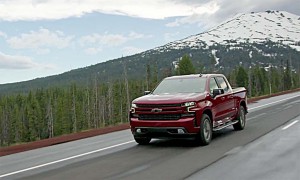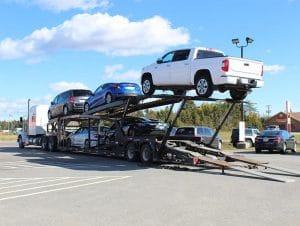More than 49,000 United Auto Workers Union employees have walked off the job at General Motors facilities across the U.S., launching their first strike at the nation’s largest car company in a dozen years.
With the talks complicated by factors including an ongoing corruption scandal that threatens both the current and immediate past presidents of the union, as well as pressure from Pres. Donald Trump, it is far from clear how long the confrontation might last. But in the weeks leading up to the strike, GM took steps that could minimize the impact on its customers, at least if the strike doesn’t drag on for long.
While “Strong sales in August helped trim overall industry inventories to the lowest level in three years,” said Michelle Krebs, a senior analyst with Cox Automotive, “GM has enough inventory on the ground so as not to hinder sales in the short run.”
Typically, automakers like to have somewhere between 60 and 65 days worth of inventory on dealer lots, Krebs noted, but its inventory currently stands at an average 77 days, a figure that includes all of its diverse line-up. Focusing on just the SUVs, pickups and crossovers that today dominate the U.S. new vehicle market, that jumps to 80 days.

There are 93 days of inventory for the Silverado, but with so many variants, choices could quickly be limited.
(GM on strike. For more, Click Here.)
That said, the figures vary, depending upon model. There are 93 days of inventory for the popular Chevrolet Silverado pickup, for example, but inventory stands at only 57 days for the Chevy Tahoe SUV.
“By brand, Buick is bursting with inventory at 98 days,” said Krebs. “Cadillac is at 89 days, GMC – a truck and SUV only brand – is at 84 days; and Chevrolet is at the lowest at 72 days. Chevrolet has cut car models from its line and trimmed production of the Chevrolet Equinox due to slowing sales and building inventories,” she added, so that relatively low number is a bit misleading.
Of course, the longer the strike drags on, the more challenges it poses for both GM and its customers. For one thing, there may soon be fewer choices as the most popular configurations of GM vehicles could sell out first. And, of course, anyone who would want to customize a new vehicle, rather than simply choose from what’s on the lot, will have to wait.
The strike also threatens to complicate matters for those looking to buy some of GM’s new 2020 models, particularly those that either just got into production or which were scheduled to begin rolling down assembly lines in the weeks to come. That includes the all-new Chevrolet Corvette Stingray, the widely anticipated mid-engine update that has already generated thousands of advance orders, months before the first of the sports cars were set for delivery.
Adding another wrinkle, the International Brotherhood of Teamsters on Sunday announced it will not transport GM vehicles while the UAW remains on strike, stranding some products at factory lots.
(Another UAW executive facing charges in corruption scandal. Click Here for the latest.)
“Teamsters and the UAW have a decades-long relationship of having each other’s back,” said the trucker union’s president Jim Hoffa.
In an unusual move, GM outlined some of the details of its rejected offer to the UAW in a statement that said it was ready to commit to $7 billion in U.S. investments and 5,400 jobs, as well as “best-in-class” wages and benefits and a signing bonus of $8,000 once the contract was ratified by workers.
With specific details unavailable – and a final settlement still out of reach – it is unclear how much the automaker’s costs will rise. And, in turn, it is uncertain how that would translate into added costs per vehicle.
(FBI raids homes of current, former UAW presidents, others. Click Here for more.)
Any increase written into the contract would come at a time when GM – like its competitors – has to deal with rising raw material costs, the need to add more content to its vehicles, especially safety gear, and other rising costs.
“We know the cost of (producing) vehicles is going to go up,” said Krebs, and consumers are seeing that in terms of record prices at the showroom. That said, “It’s difficult to pass on cost increases,” especially those that competitors aren’t facing, so GM may have to absorb at least some of the expenses that eventually will be built into a UAW contract.
But some of those added costs likely will have to be added on. And, as soon as the UAW finishes up at GM, it will move onto Ford and Fiat Chrysler Automobiles to negotiate contracts there. Traditionally, foreign-owned plants eventually wind up boosting their own wages and benefits after the Detroit Big Three conclude their negotiations.
One big concern among industry beancounters is that prices have risen so much in recent years that millions of potential U.S. buyers have been priced out of the market. That trend could accelerate, said Krebs, noting that there are “a lot of choice in the nearly new market” for motorists to fall back on.



